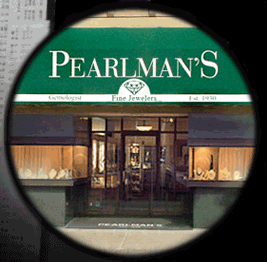What do the Parthenon, the Cartier Tank watch, the Hasselblad camera, the Chanel suit, the Jaguar, the lamps of Tiffany & Co. and the Empire State Building have in common?
Give up?
They are all icons of design. They represent the epitome of a certain style of design brought to such perfection that it endures through the ages. These styles are found in architecture, furniture, the graphic arts, the decorative arts, and, of course, in jewelry.
Victorian Period(Approximately 1837–1901)
Something that exemplifies a Victorian style today, for example, will display the wonderful decorative motifs of the nineteenth century, but is improved via innovative technology and the new sensibilities of a twenty-first century artist.
Victorian jewelry is antique
Art Nouveau Period (Approximately 1890–1915)
A French jeweler by the name of Oscar Massin paved the way for the Art Nouveau period with his designs from 1860 to 1880. They took a bold new approach and were concerned more with the overall impression created by each jewel than with the use of valuable gemstones.
Edwardian and Belle Epoque Period (Approximately 1901–1914)
The Edwardian period coincides with the Belle Epoque (the French term that means “beautiful era”). During this period we find new styles of diamond cutting entering the scene, creating greater brilliance and sparkle and providing designers with new incentives to show them off to best advantage. While gold was still used, designers turned to platinum because its strength and malleability allowed for innovation in the design of settings, including ways to set diamonds in which the settings became virtually invisible.
Art Deco Period (Approximately 1920–1935)
The Empire State Building, for instance, is a prime example of Art Deco design, a style from the 1930s currently experiencing a resurgence of popularity. Art Deco jewelry is equally classic and sought after, having the same geometric lines, sleek curves, and mixture of black-and-white elements as the Empire State Building. Other famous Art Deco buildings include the Chrysler Building and the Rockefeller Center.
In most countries, any piece of jewelry sold as antique
must be at least 100 years old. Period
refers to various time periods in which a particular style evolves and is popular for a certain span of time; it applies to many areas including art, architecture and jewelry.
Retro Period (Approximately 1940–1950)
Retro jewelry is a modern style that emerged after World War II. The style is very distinctive and recognizable, and you will quickly develop an eye for it. You often see two-tone pieces combining yellow and rose gold. The jewelry tends to be larger and architectural in feel, often set with large, affordable, colored gemstones such as citrine, aquamarine, topaz, and peridot. One can also find diamonds, sapphires, rubies, and emeralds, often set in a pavé style, in designs where the metal seems to fold over and meld into itself.
Retro period jewelry is just coming into its own and offers excellent value and a very wearable, distinctive choice. All of the major jewelry houses, including Cartier, Bulgari, Tiffany, and Van Cleef & Arpels, made beautiful jewelry in this period, but so did other firms that are less well known, including American firms such as J.E. Caldwell and Black, Starr & Frost.
How the Past Informs the Present
To be a top-echelon jewelry designer is to be a mixture of architect, sculptor, painter, and art historian. The designers represented by Pearlman's are experts in the great traditions of design. In fact, designers Robert Lee Morris and George Sawyer both credit sculpture as an inspiration for their work. Prolific jewelry and accessories designer Barry Kieselstein-Cord has many pieces of his work in the world's top museums. Further, all have studied and reinterpreted great jewelry of the past and then transformed it with their own unique genius.
The most popular and collectible jewelry periods
of jewelry today include the Victorian
period (1830s to 1900), La Belle Epoque (from 1870s till approx 1915), Art Nouveau (approx 1895-1915), Edwardian (approx 1900-1915), Art Deco (1915-into the 1930s), and Retro (1940s-early 1950s).
Tomorrow's Design Icons
While contemporary, the works of these designers will be just as timeless as the artists and designers who preceded them. From Damiani to Eddie Sakamoto, there isn't one designer represented here who hasn't broken new ground in jewelry, and in art. Their creations are the design icons of tomorrow.

 Shopping Bag
Shopping Bag










